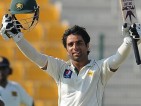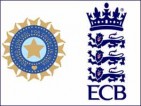England’s Blossoming Under Flower
Jake Howe |
When captains Strauss and Sangakkara shook hands on the final, wet day in Southampton, England ended an eighth Test series in a row without defeat.
Since coach Andy Flower and captain Andrew Strauss took over their long-term roles after defeat in the West Indies two years ago, England have not only remained unbeaten but have never failed to win a series at home. Adding this record to the historic Ashes wins both home and away, and this is not only a successful team – it is England?s best team for decades.
This may come as a rather startling conclusion, given that it is hard to see what has really changed. Many of the names on the team sheet had their careers marked by under-achieverment. Ian Bell, Matt Prior, James Anderson and even Strauss have all been dropped from the side at least once, while Alastair Cook and Stuart Broad have had numerous questions asked of them in the past.
Of the key players in this line-up, only the steadfast Jonathan Trott has been the new face in the dressing room. While the Cape Town born batsman has delivered some astonishing returns – including six centuries in his 34 innings – he has not needed to be the star – rather, he has been just one name in an increasingly tough-looking batting order.
Rather than finding the new talent, Flower has worked with the talent he had, having been an assistant coach under previous incumbent Peter Moores, and matured his players into the unit they were always capable of becoming.
Bell and Cook may have endured endless criticism during their haphazard first few years, but since the 2009 Ashes their returns have been astronomical. It used to be that averaging 40 or so was the mark of a good batsman, but these two have been averaging 81 and 67 respectively, with 15 centuries between them. The improvement has come with work and discipline, with Bell removing the concentration errors that so frustrated his fans, and Cook learning to rely on his impeccable temperament rather than his imperfect technique.
Meanwhile, wicketkeeper Matt Prior has undergone a similar renaissance. Having been dropped from the side for his poor standard of glovework, his return under Flower has featured a marked improvement behind the stumps, while still living up to the batting credentials that initially got him into the side.
It is England’s bowling attack, however, that has set them apart on the world stage.
The key turnaround is their new-found ability to hunt as a pack, keeping the opposition under wraps with tight lines and subtle movement, waiting for one to rise up and take to the attack.
Anderson has become the spearhead. A player who always had the talent to get through a batting line-up, he has learned to not lose line and length when the ball isn?t moving as much, or things aren’t quite in his favour. He’s flattened out the troughs.
In the 2010 English summer he could almost do what he wanted. Faced with Pakistan and Bangladesh’s misfiring batting line-ups and armed with a swinging Duke ball, he wreaked havoc.
Next, when conditions didn’t suit as well in Australia, and being up against much more seasoned opposition, he knew enough to bowl the right line, keep his length full, and frustrate the Australians into poor shots against a ball that moved just a touch further than they thought. The wickets piled up.
Then there’s Graeme Swann, a man who would not have been anyone’s favourite for the world’s leading spinner on his debut three years ago, but here he is. Having been called up as a teenager, Swann was dropped back into county cricket (possibly ineffective in the nets, possibly just an abrasive character when young) and left to do the hard yards.
An unusually attacking off-spinner, Swann has forged his game over the years in the Championship and has emerged as a key figure in the balance of the side. His off-breaks being a wicket taking threat has also allowed the use of England’s four-man attack, giving depth and therefore confidence to an emerging batting order.
Yet another name back from the county cricket wilderness is the towering Chris Tremlett, a man plagued by injuries but who has matured just at the right time, again being years after his 2007 Test debut. Recalled for the Ashes squad in 2010-11, Tremlett was an immediate success and his imposing pace and bounce looks to make him the final link in the attack.
The reserves have also come to the fore in recent months with Steven Finn and the Yorkshire duo Tim Bresnan and Ajmal Shahzad all enjoying successful starts to their Test careers, a luxury England has not enjoyed for some time. Shahzad has been having a poor season this year, but the remarkable thing from England’s point view is – that’s fine. England can pick him when he’s ready. They have the stocks and patience to do that.
Perhaps the only worry for this side has been the performances of former star man Kevin Pietersen. Having lost the captaincy and struggled with injuries in 2009, he has since struggled to match the output of his team-mates – and appeared to pick up an inexplicable weakness to left-arm spin.
It is not the case that KP has been a failure in this time, at least in Test cricket, having hit a tremendous double-century in Adelaide to put England towards their first win of the 2010-11 Ashes. He has simply gone from the headline name to an also-ran within his own team, and being a cricketer with a reputation as ego-centric and introspective, perhaps his issue lies with adapting to that change.
The new and improved professionalism of this side is perhaps best reflected in the number of results that have gone their way when perhaps they shouldn’t. Nail-biting draws at Cardiff, Centurion and Cape Town in 2009-10 came at the end of Tests where England were certainly outplayed, yet still clung on to deny their opponents victory.
It was a similar story in Brisbane last November. England conceded a huge first-innings lead, but fought back from cornered to commanding with 517-1, leaving the Australians wondering how to take their wickets.
England have been beaten in Tests over the last two years, against Australia, South Africa and Pakistan, and beaten heavily, but it’s looking like that’s what is necessary – England don’t just subside anymore. If you want to beat them, you’ve got to really beat them.
So we come to the important question. Is this the world’s No 1 team? Not yet they aren?t, neither statistically nor theoretically, until they beat India this summer. India have enjoyed a similar blooming under captain MS Dhoni and coach Gary Kirsten, but their unbeaten run extends back into 2008.
Not only that but so many results have gone to the Indians that they shot to the No 1 ranking, and held last year despite home and away assaults from the South Africans. In order for England to be taken seriously as the world’s best, they will have to claim the title from this summer’s tourists.
It will provide an interesting challenge for England’s new and improved batting, as with the exception of Dale Steyn in South Africa in 2009-10, they are yet to take on a fast bowler with the class and guile of Indian spearhead Zaheer Khan.
The Indian back-up seamers have less impressive records, having produced several shaky series recently, but the likes of Ishant Sharma, after his recent Caribbean success, has been known to bring pace, aggression and wicket-taking spells. Nonetheless, England will be confident of overcoming an attack very reliant on its one world-class paceman.
The key to the battle will doubtlessly be to break through India’s stellar batting. The touring side will feature several of the best batsmen of this generation, including Rahul Dravid, Virender Sehwag, VVS Laxman and of course the matchless Sachin Tendulkar.
Not only that but it is further bolstered by the likes of Gautam Gambhir and Dhoni himself, both of whom have proven their class at international level. Even offspinner Harbhajan Singh has Test centuries to his name.
England, however, have as good a chance as anyone to do it for a long time coming.
Their bowling attack is statistically the best in the world by some distance over the last year, features enviable depth and has just made fools of the quality Australian and Sri Lankan top orders.
Time and again the word from the England camp has been their push to become the world’s finest Test team, and this summer could not be a more crucial part of it.
Now is their time – they are to finally able to step onto the field and prove it.





Nicely written article
Comment by Cevno | 12:00am BST 20 July 2011
Excellent feature Jake – more please
Comment by fredfertang | 12:00am BST 20 July 2011
Very good and not overly jingoistic.
Thanks
Comment by TopCat | 12:00am BST 20 July 2011